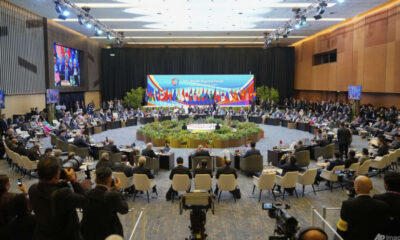Top Stories
Summer Heat Training: Enhance Fitness Safely for Fall Performance

Exercising in warmer temperatures can significantly boost fitness levels, particularly for endurance athletes preparing for fall competitions. Tish Hamilton, a seasoned runner with 59 marathons and five ultramarathons to her name, emphasizes the potential benefits of training in the hot and humid conditions typical in Savannah, Georgia. At the age of 63, Hamilton notes the discomfort of summer training but recognizes its role in enhancing her performance when the cooler months arrive.
Research supports the notion that training in heat can mimic the effects of altitude training, which is known to improve endurance sports performance. According to studies, exercising in warm conditions increases blood flow to the skin for cooling, which initially reduces the blood available to muscles, causing fatigue. However, over a period of four to five weeks, the body adapts by producing more blood and red blood cells, akin to the physiological changes experienced after three weeks at high altitude.
“Once the humidity breaks, the benefits of summer training become apparent,” Hamilton stated, reflecting on her experience. Steve Magness, a running coach and author of *The Science of Running*, corroborates this, explaining that athletes often experience a significant boost in performance after acclimatizing to the heat.
Safe Strategies for Training in Heat
While the advantages of summer training are clear, safety remains paramount. Both Hamilton and Magness advocate for a gradual acclimatization process. This involves setting realistic expectations and allowing time for the body to adapt. Magness advises, “You will go from feeling good to feeling miserable. Go slow, and don’t worry about your miles or workout intensity.”
For those beginning to train in heat, starting with short sessions—around 30 minutes of easy activity—can be beneficial. Jill Patterson, a cycling coach and three-time national USA Cycling Gran Fondo champion, suggests consistency is key. “Try to spend a few workouts a week in the heat,” she said. If midday temperatures are too extreme, consider training during cooler times of the day, while still aiming for outdoor sessions.
Hydration is critical, as the body’s need for fluids increases in hot weather. Athletes should monitor their thirst and drink more frequently. Signs of heat-related illness, such as dizziness or confusion, should prompt an immediate cessation of activity. For added safety, wearable patches that measure sweat rate and sodium loss can provide valuable insights into hydration needs, although they should be used after acclimatization.
Maintaining Performance Post-Acclimatization
Once athletes have adapted to the heat, the challenge of training in warmer conditions shifts. While it may remain more difficult to achieve the same speeds as in cooler weather, athletes can maintain their training intensity. Magness recommends focusing on the effort rather than the pace. “If you want something harder, go after it, but be willing to stop or modify if you aren’t tolerating it well,” he said.
Athletes should remain vigilant about their physical responses during training. A noticeable increase in heart rate or difficulty speaking can indicate that it is time to adjust the pace or take a break. Hamilton notes that shifting focus from distance to time spent training can help manage expectations and reduce the pressure to perform.
As fall approaches and temperatures drop, those who have trained diligently throughout the summer can expect to reap the rewards. On cooler days, athletes often notice a marked improvement in their performance. “You appreciate how much less effort it takes,” Hamilton said, highlighting the sense of achievement that comes with proper preparation.
In conclusion, while summer training presents challenges, the potential benefits for endurance athletes are significant. By acclimatizing safely and monitoring their responses, athletes can enhance their performance for the upcoming season. With the right strategies, they can look forward to the cooler days of fall feeling stronger and more prepared than ever.
-

 Lifestyle4 months ago
Lifestyle4 months agoHumanism Camp Engages 250 Youths in Summer Fest 2025
-

 Business5 months ago
Business5 months agoKenvue Dismisses CEO Thibaut Mongon as Strategic Review Advances
-

 Sports4 months ago
Sports4 months agoDe Minaur Triumphs at Washington Open After Thrilling Comeback
-

 Sports5 months ago
Sports5 months agoTupou and Daugunu Join First Nations Squad for Lions Clash
-

 Top Stories5 months ago
Top Stories5 months agoColombian Senator Miguel Uribe Shows Signs of Recovery After Attack
-

 World5 months ago
World5 months agoASEAN Gears Up for Historic Joint Meeting of Foreign and Economic Ministers
-

 Health4 months ago
Health4 months agoNew Study Challenges Assumptions About Aging and Inflammation
-

 Business5 months ago
Business5 months agoOil Prices Surge Following New EU Sanctions on Russia
-

 Entertainment4 months ago
Entertainment4 months agoDetaşe-Sabah Violin Ensemble Captivates at Gabala Music Festival
-

 Entertainment4 months ago
Entertainment4 months agoBaku Metro Extends Hours for Justin Timberlake Concert
-

 Top Stories5 months ago
Top Stories5 months agoRethinking Singapore’s F&B Regulations Amid Business Closures
-

 Business5 months ago
Business5 months agoU.S. House Approves Stablecoin Bill, Sends to Trump for Signature









